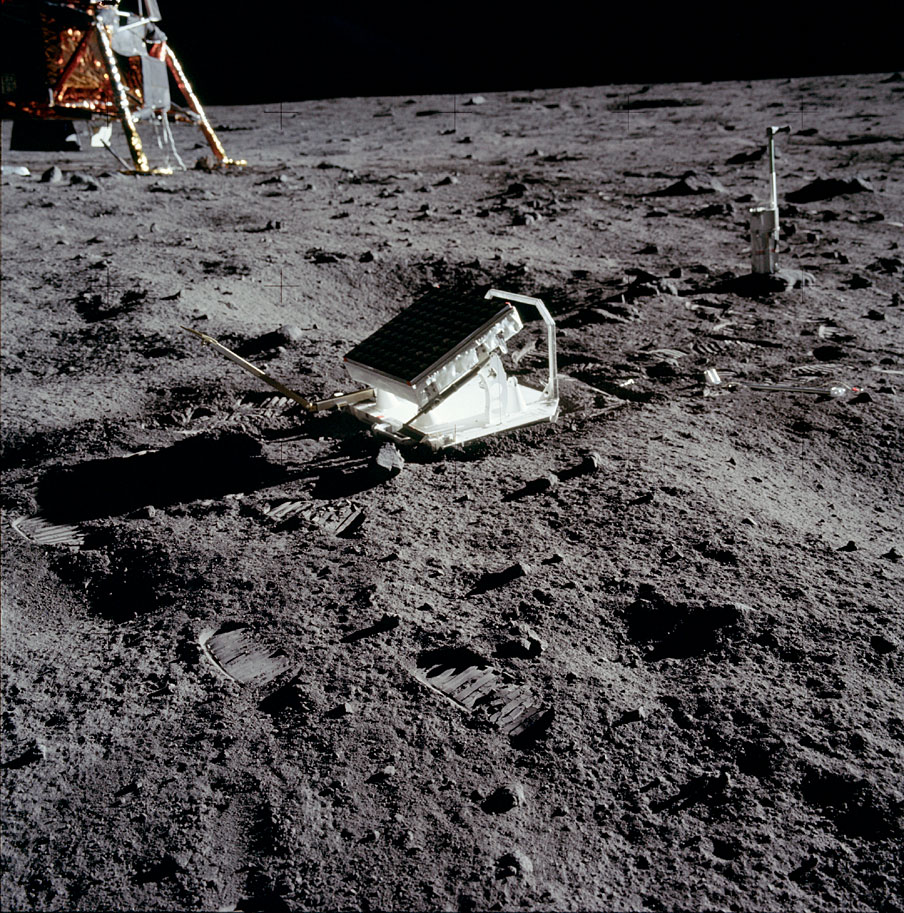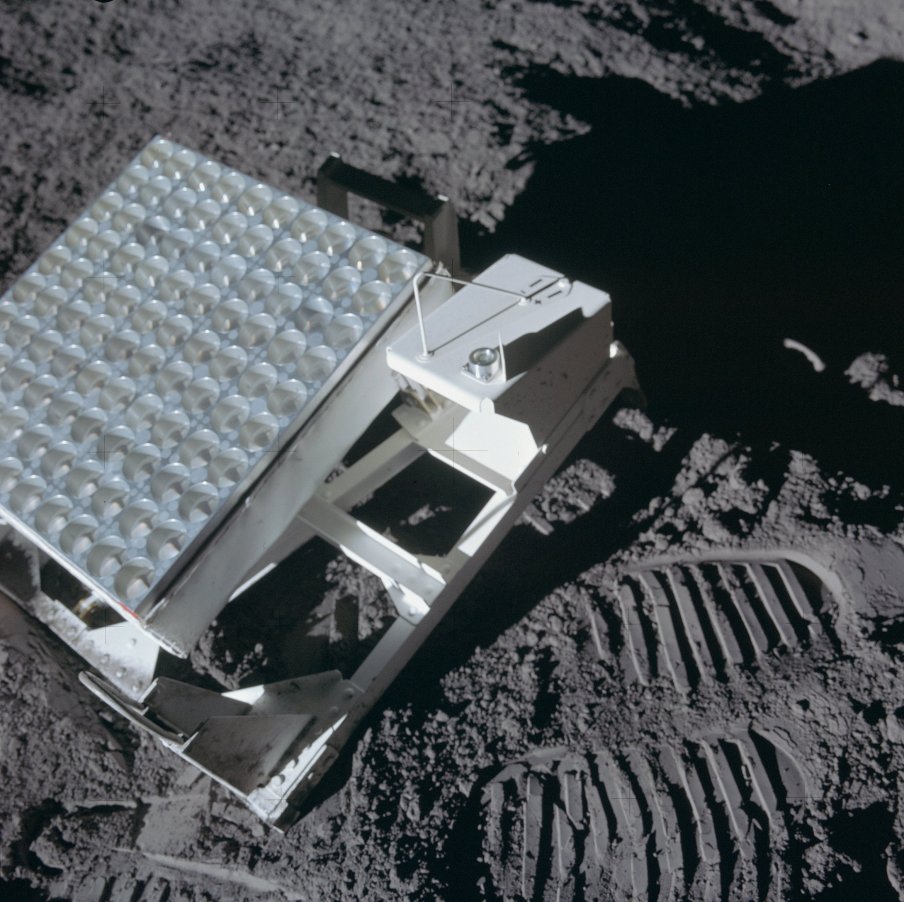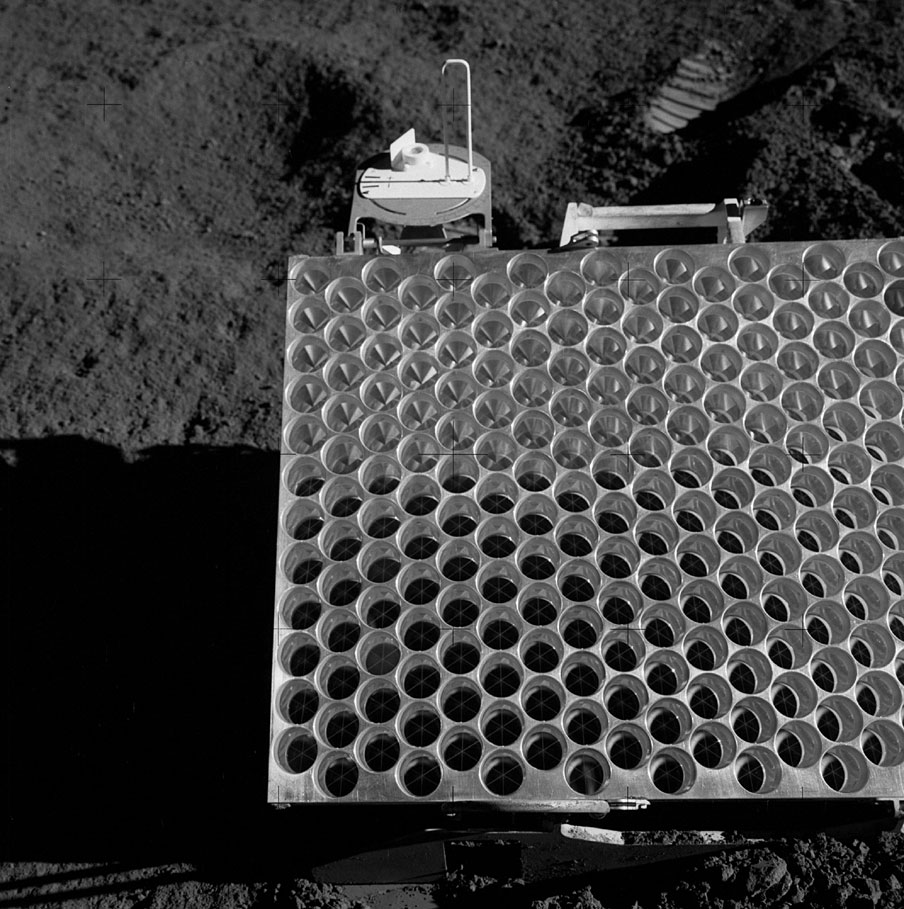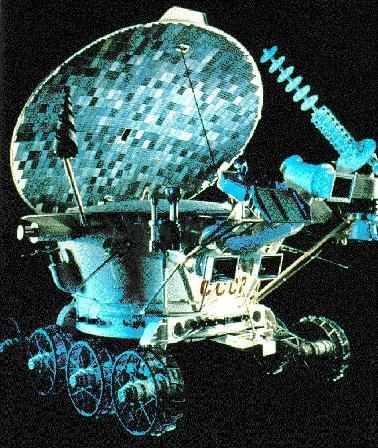
Apollo and Luna Reflectors: Reflector Information
RetroReflector Array (RRA) Characteristics:
 |
 |
 |
Apollo 11 |
Apollo 14 |
Apollo 15 |
Images courtesy of NASA HQ |
||
 |
 |
Lunakod 1 Rover from Luna 17 mission (retroreflector array on left) |
Lunakod 2 Rover from Luna 21 |
Images courtesy of NSSDC |
|
All the lunar retroreflector arrays are rectangular planar in shape. The Apollo 11 and 14 laser reflector arrays are identical and consist of 100 fused silica corner cube reflectors, mounted in a 46 centimeter aluminum panel. Each of these corner cube is 3.8 centimeters in diameter. The Apollo 11 and Apollo 14 arrays are located in the Sea of Tranquility and the Fra Mauro, respectively.
The Apollo 15 RRA, located in the Hadley Rille, is a larger array consisting of 300 corner cubes. French built reflectors, consisting of 14 corner cubes, were also left on the Moon by the unmanned Russian Luna 17 and 21 missions. The Luna 17 and 21 arrays are located in the Sea of Rains and the Sea of Serenity, respectively.
Four observatories have regularly ranged the Moon with these reflectors: one is located at McDonald Observatory near Fort Davis, Texas; another was located atop the extinct Haleakala volcano on the island of Maui in Hawaii, but is now closed due to budget constraints; another is Observatoire de la Cote d'Azur located in southern France near Grasse; and another is Fundamental Station Wettzell located in Wettzell, Germany. The Lick Observatory in northern California also has been used in the past for the lunar laser ranging experiments, and ranging programs have been carried out in Australia and Russia.




